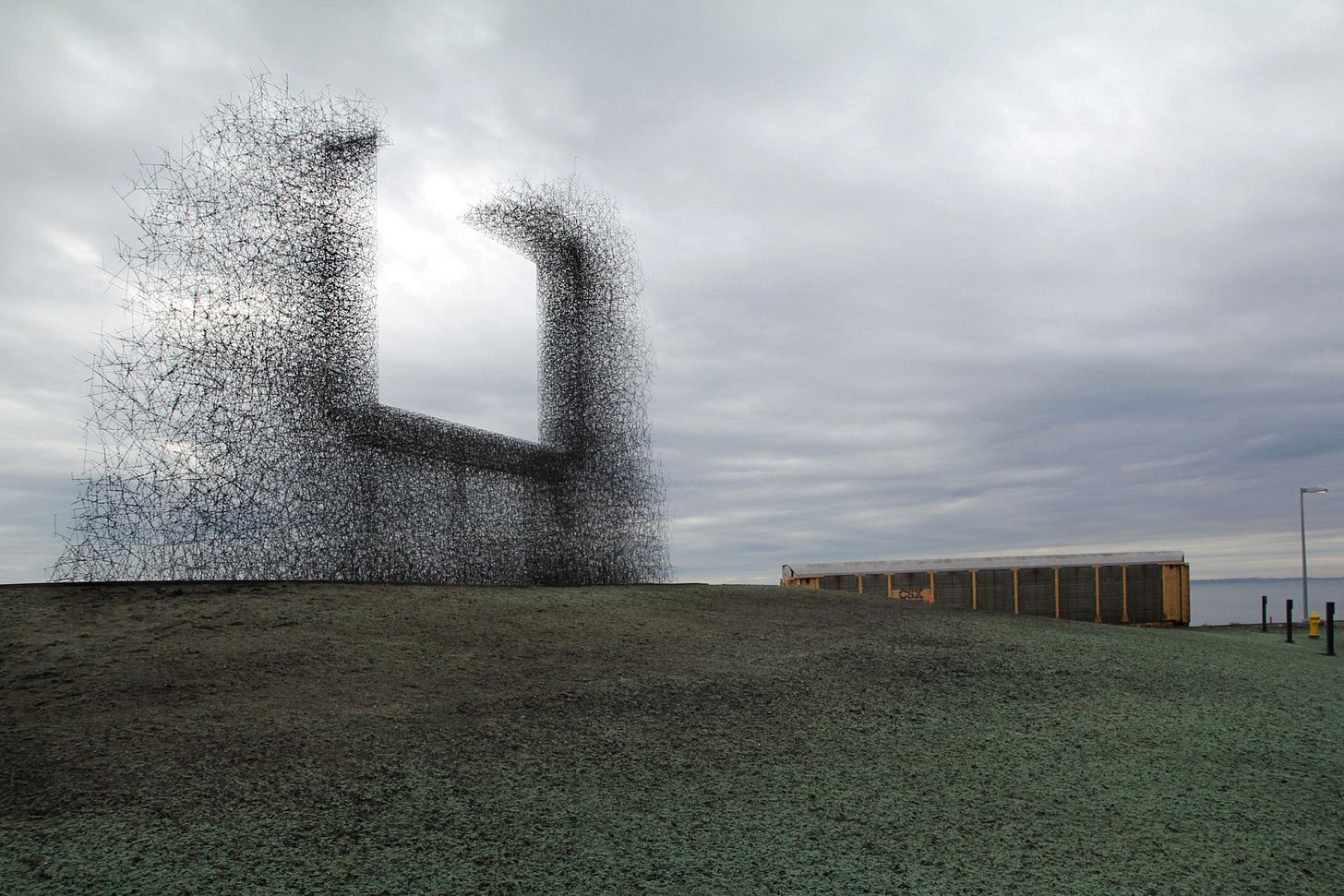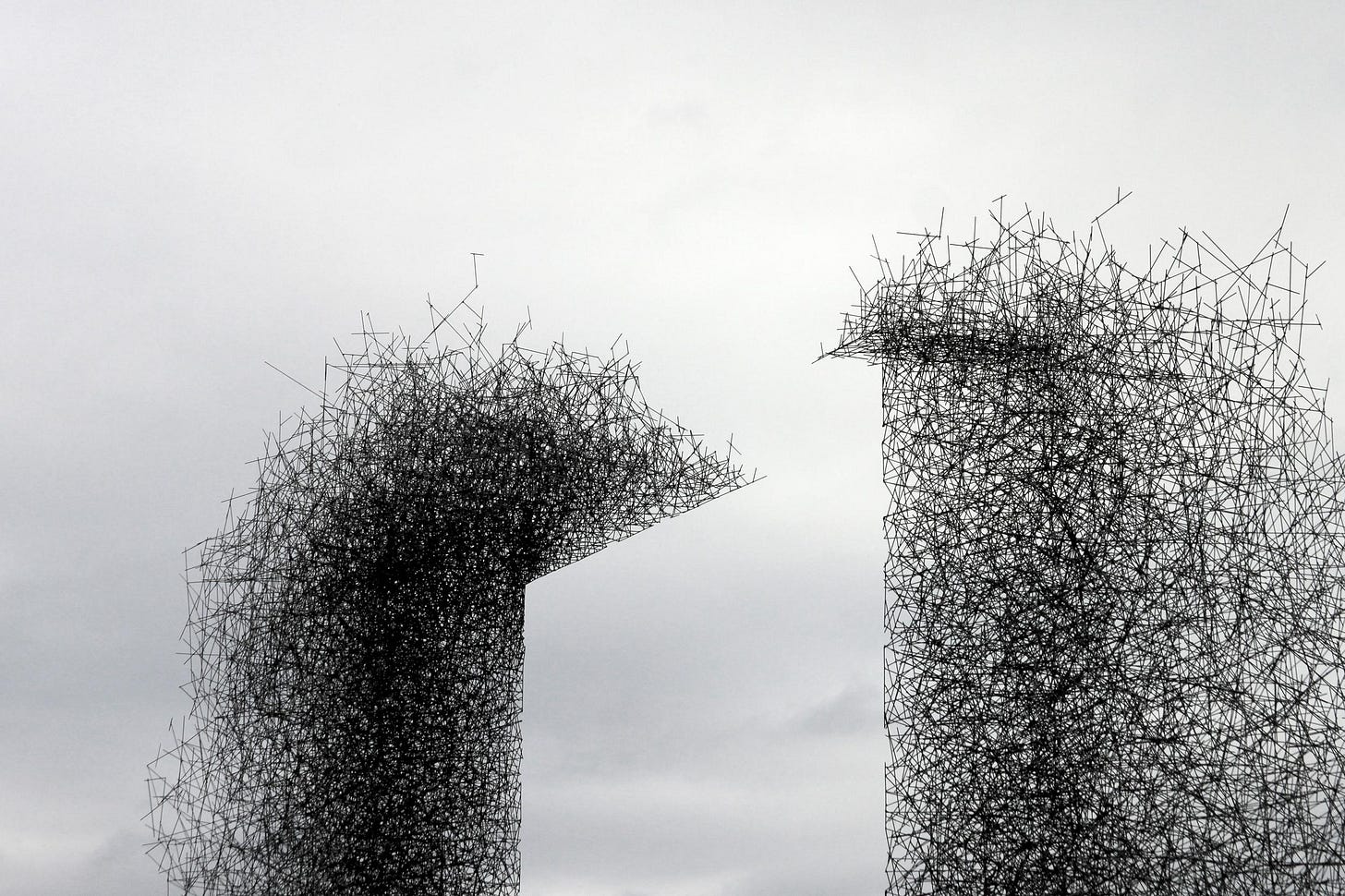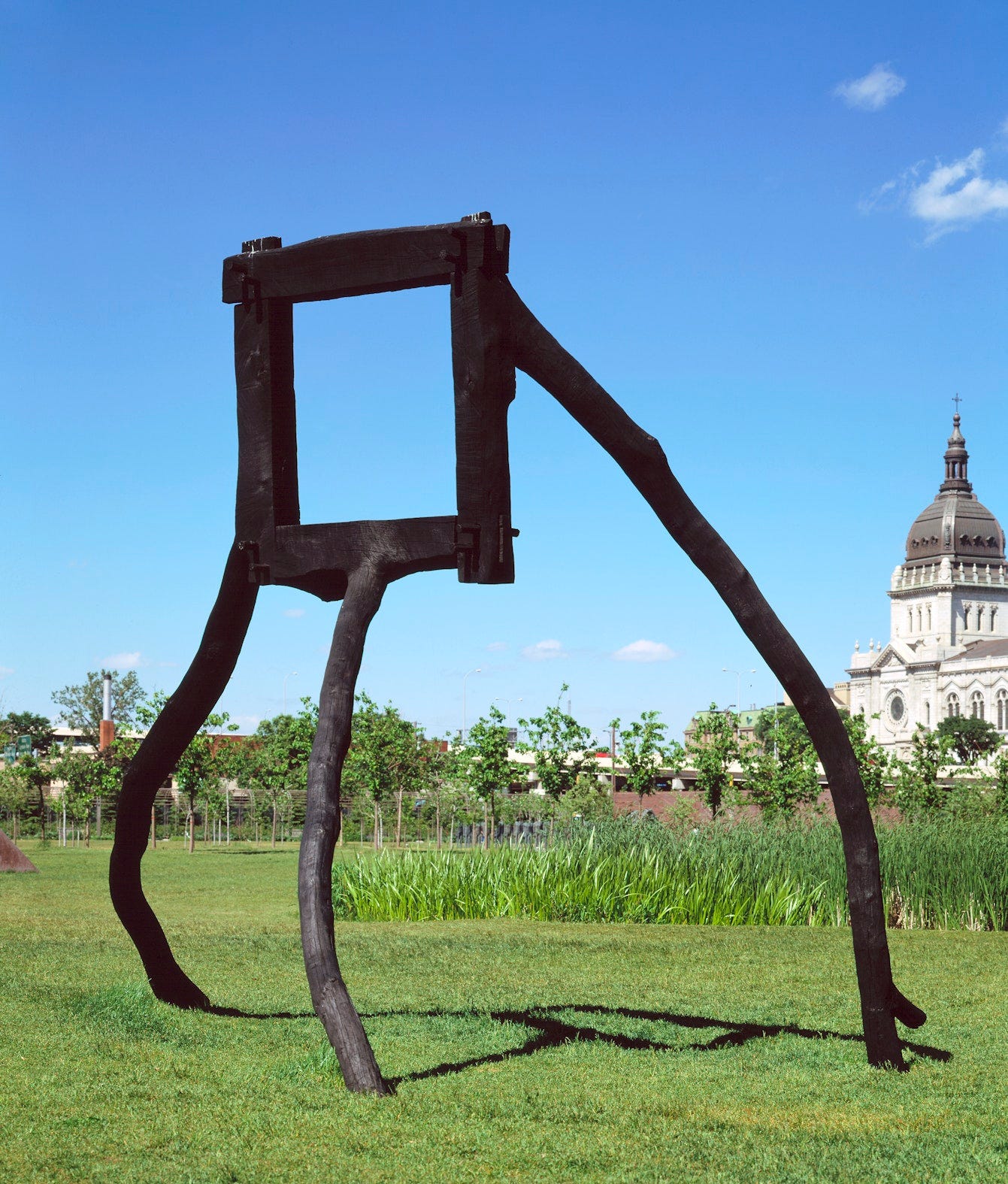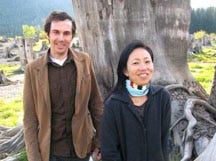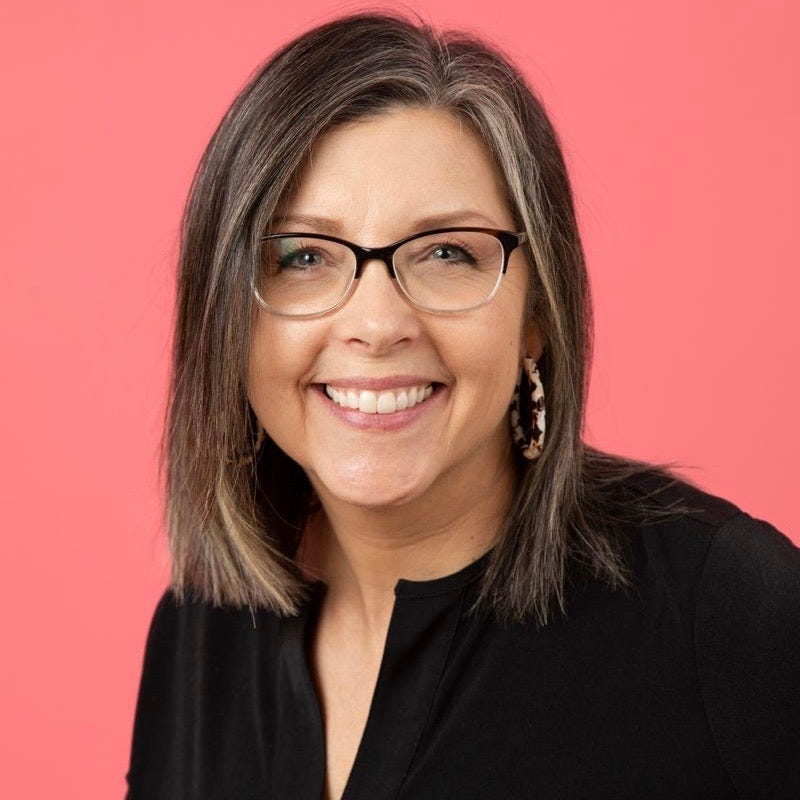Non Sign II, 2009 by Lead Pencil Studio
35’ wide x 3’ deep x 25', tall located in Blaine Washington (border station)
Things you expect to see at a border crossing: fences, contraband-sniffing dogs, stern warnings. Things you don't expect to see: a 30-foot-tall, 50-foot-wide, woven metal sculpture that looks a lot like a billboard. Except where you expect to see an ad for fast food, there is literally nothing but sky. Non-Sign II, commissioned by the federal General Services Administration (GSA), is a sculpture by Seattle-based partners Annie Han and Daniel Mihalyo, collectively known as Lead Pencil Studio. Like much of their work, Non-Sign II evidences the art and architecture duo's preoccupation with the framing and partitioning of space to direct the viewer to a new way of seeing. (arts.gov)
See
Look closely at the chaotic arrangements of iron rods creating the frame and how it contrasts with the precise opening. How might that contrast impact the effectiveness of the goal?
Notice the way Non-Sign draws the viewer to the framed landscape.
Say
Four States ban billboards! Many states imposed regulations on the production of billboards, while others banned them outright. Vermont, Alaska, Hawaii, and Maine are the only four states to do so, and they share a common reason: maintain their state's natural beauty. (Billboardsin)
If it came to a vote in your state, would you ban billboards, too?
Below, look at the Standing frame by David Nash. Visitors are meant to stand behind it and ‘frame’ the city scenes beyond.
How is David Nash’s Standing Frame similar to Lead Pencil Studio’s Non-Sign?
How is installing it in a sculpture garden different from Non-Sign’s installation among other billboards on the US/Canada border?
Standing Frame by David Nash, 1987
Do
Edward T. McMahon argues why billboards are detrimental in The Case for Control.
Create a frame by arranging sticks or toothpicks around a shape. What will you frame?
Can you create an art piece that causes people to notice something you value?
About Lead Pencil Studios:
Annie Han (BArch' 93) and Daniel Mihalyo (BArch' 94) are a Seattle-based team that has created a successful practice that bridges the gap between art and architecture. Their firm, Lead Pencil Studio, includes an architectural practice specializing in residential and commercial buildings and an art practice specializing in site-specific pieces, which explore the intangible conditions of architecture at full scale. Han and Mihalyo formed Lead Pencil Studio in Seattle in 1997. The small studio takes on three annual architectural projects to maintain their art practice. Han says, "[we] are working in a new territory that brings art to architecture."
Please share your reflections with me by replying to this post or tagging my Wonder Wander Facebook or Instagram pages!


